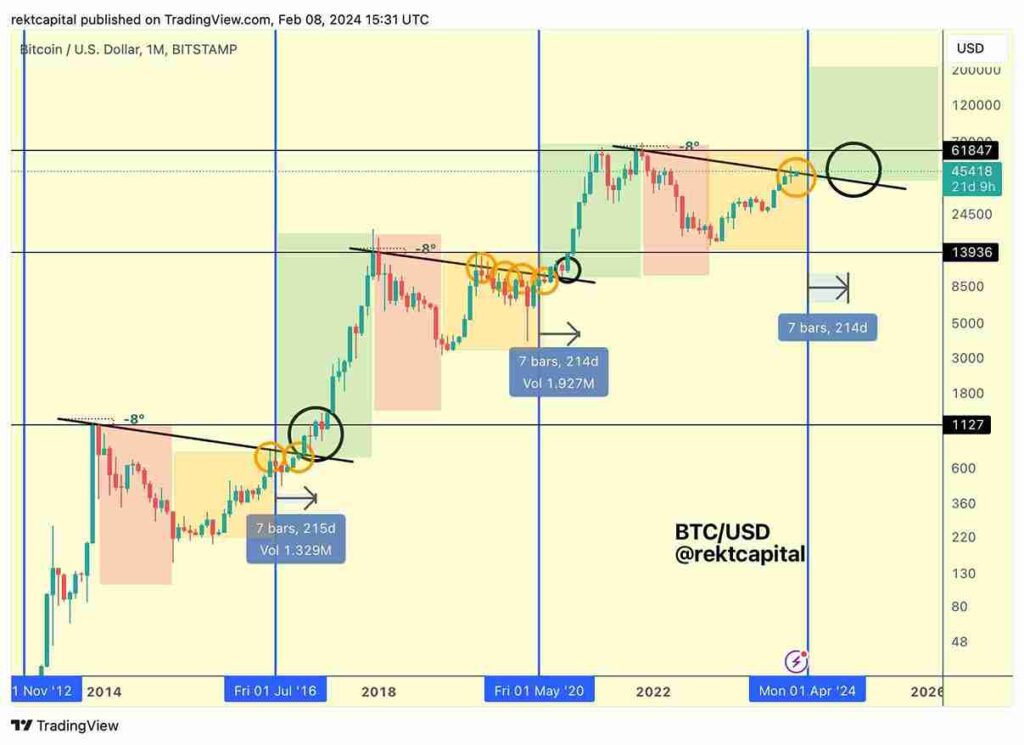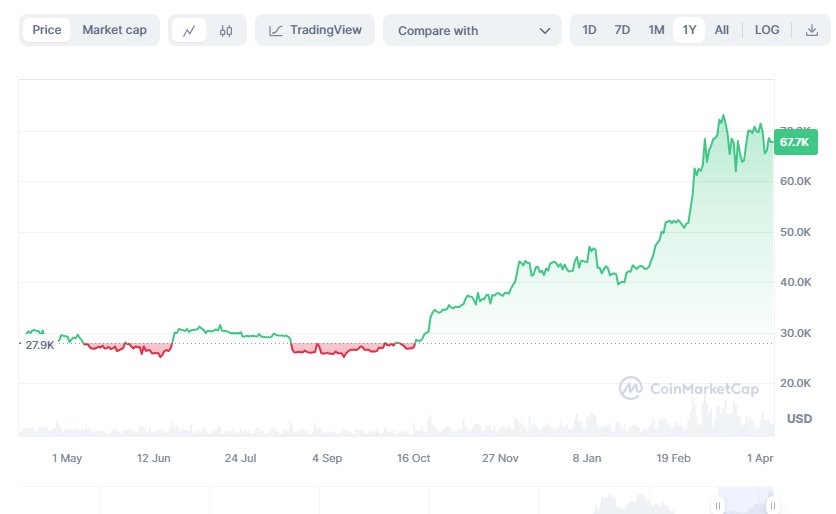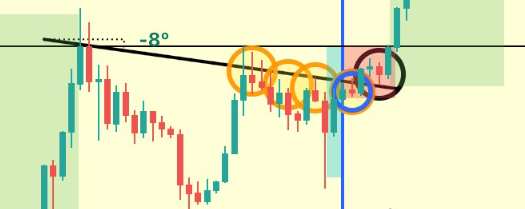The Macro Diagonal Theory of Bitcoin explains how Bitcoin’s price reacts to a resistance prior and after the Bitcoin halving. The theory so far has been found to be reliable for the current halving period (late 2023 – late 2024).
Introduction
Rekt Capital found a very interesting pattern in Bitcoin prices which occurred around each halving of Bitcoin be it 2012, 2016 or 2020. Surprisingly, the theory also aligns with other Bitcoin price patterns. However, it goes very much in detail and deeper than the others.
Briefly, the theory identifies a macro diagonal (and hence the name macro diagonal theory) which acts as both resistance and then support during the Bitcoin halving. At first, Bitcoin approaches this resistance line by riding a rally and stops suddenly prior to encountering this. The price of Bitcoin then approaches this macro-diagonal resistance line only to cross it post the halving date, after which there is a parabolic upside witnessed in Bitcoin prices.
Explaining the Terms of the Macro Diagonal Theory
The theory might seem a bit difficult to understand for the uninitiated. However, if you take a careful note of these terms, it becomes very easy to understand and gain from the biggest cryptocurrency in the market.
We have explained a few terms below assuming the reader to be a complete novice. Professional traders or persons with knowledge can skip this section.
Macro Diagonal
The Macro Diagonal is a support line that runs oblique from Bitcoin’s previous all time high achieved after the last halving date and the line ends at the upcoming halving date. It has a negative gradient of -8 degrees.
The line has multiple roles starting from acting as a resistance before halving date to acting as a support after the halving date.
Support
In the context of crypto, a support is a zone or a line below which a cryptocurrency’s price rarely falls. Even if the price slides below the support line, it quickly recovers and again jumps back above the support line.
Resistance
In the context of cryptocurrencies, a resistance is a zone or a line above which the price of the cryptocurrency rarely goes. It acts as a selling zone where the crypto witnesses maximum sell-offs. Even if the price goes above the resistance line, it rarely sustains and falls back below the line.
Pre-Halving
In the context of Macro Diagonal Theory, Pre-Halving is the period which starts from 3-4 months prior to the Bitcoin halving date and ends at the halving date.
Post Halving
In the same context as above, Post Halving is the period which starts from the date of the Bitcoin halving and could continue till 365 days after the date of halving.
Parabolic Upside
Parabolic upside refers to the significant rise in the price of Bitcoin after the halving period ends. Often the graph of the price shows a parabolic shape and hence the end portion of the Macro Diagonal Theory calls it with this name.
Do you still keep your stash in Centralized Exchanges? Top 7 Bitcoin Wallets to Use in 2024
The Macro Diagonal Theory of Bitcoin
The theory is divided into six parts, each one representing a phase of price behavior. All of these seek to explain the behavior of Bitcoin prices just before and till a year after the Bitcoin Halving date (next halving date is on April 18, 2024).
The below image is crucial to understanding the explanation and we suggest you take a detailed look at it while reading the below phases.

The image above shows the graph for macro diagonal theory. The vertical blue lines show the halving dates. The horizontal black lines show the different price levels.
Pre Halving Rally
The theory points out that before each halving period, the price of Bitcoin rallies to create a new all time high. This was seen during the previous rallies in 2012, 2016 and 2020.
A similar rally was seen before the halving date in 2024, starting from October 2023 – March 2024. In the current halving period, this rally was majorly brought because of the news and events surrounding the Bitcoin ETF approval. However, there was also a role of Bitcoin Ordinals in increasing Bitcoin adoption.

Pre Halving Retrace
Just prior to the halving, Bitcoin consolidates and corrects. It retraces its price after reaching a resistance level. This resistance level is called the macro diagonal.
Macro Diagonal Rejection
The Macro Diagonal acts initially as a resistance and makes Bitcoin consolidate its price. However, later it becomes a support when Bitcoin crosses it in the post halving period.

In the above image, the first yellow circle shows how macro diagonal is rejected in 2020’s Bitcoin halving.
Please note that the macro diagonal could be approached multiple times by Bitcoin before it enters the reaccumulation phase. In 2016, this macro diagonal acted as a resistance only once. However, in the 2020 halving period, the macro diagonal acted as a resistance thrice.
Post Halving Reaccumulation
After the halving date is over, Bitcoin enters an accumulation phase where the price could consolidate to the level of pre-halving rally. There is an increased accumulation of Bitcoin in this period and prompted by an increased number of buyers, the prices again jump towards the macro diagonal.
Macro Diagonal Retest
The Macro Diagonal is tested once more and this time the Bitcoin’s price finally crossed this resistance.
In the subsequent period, a few weeks or months post halving, this diagonal now acts as a support.
Post Halving Parabolic Upside
The final phase is the parabolic rally in Bitcoin where its price gains a lot in a very short period of time. New all time highs are seen frequently and Bitcoin enters a massive bull rally.
In the past, the upsides in Bitcoin’s price after each halving has been noted below. The price gain shows a measure of the upside in Bitcoin’s price on the day of halving versus its price exactly a year after.
- 2012 – 8069%
- 2016 – 284%
- 2020 – 538%
For Advanced Traders A Comprehensive Guide To Bitcoin Futures vs. Margin Trading, Spot Markets.
Conclusion
Bitcoin Halving remains a great mystery especially among traders many of which try to predict its price with a goal for potential gains or to avoid losses.
The analysis by Rekt Capital is one of the most reliable models to show Bitcoin’s price behavior during halving.
However, no model is 100% accurate and users should exercise utmost precaution while investing or trading with real money. Trading and investing both have different approaches and should be dealt with carefully.




















